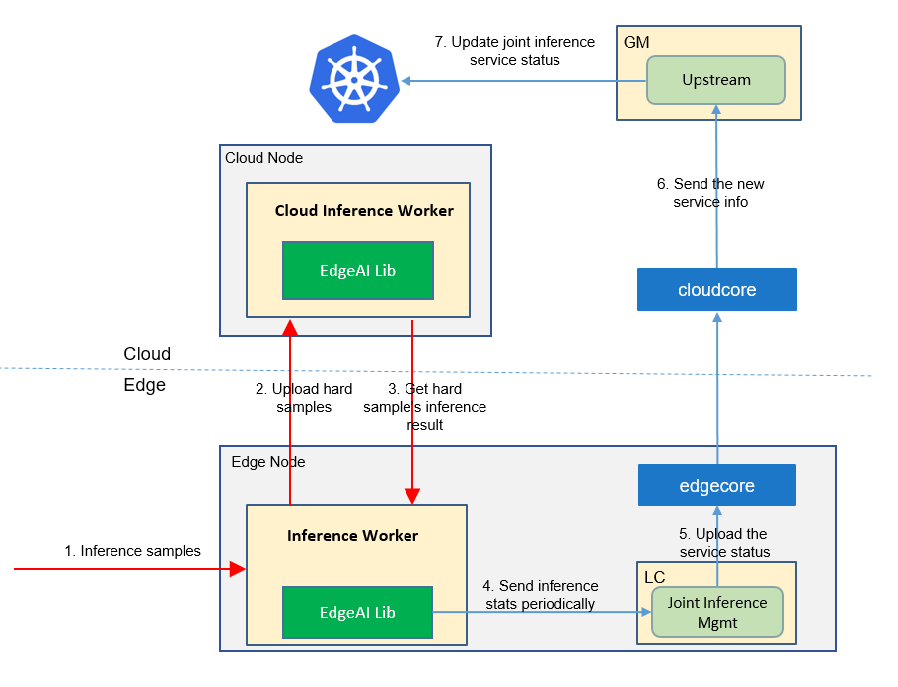Joint Inference¶
Motivation¶
Inference on the edge can get a shorter latency and a higher throughput, and inference on the cloud can get better inference precision. The collaborative inference technology detects hard samples on the edge and sends them to the cloud for inference. In this way, simple samples inference on the edge ensures latency and throughput, while hard samples inference on the cloud improves the overall precision.
Goals¶
Joint inference improves the inference precision without significantly reducing the time and throughput.
Proposal¶
We propose using Kubernetes Custom Resource Definitions (CRDs) to describe the joint inference specification/status and a controller to synchronize these updates between edge and cloud.
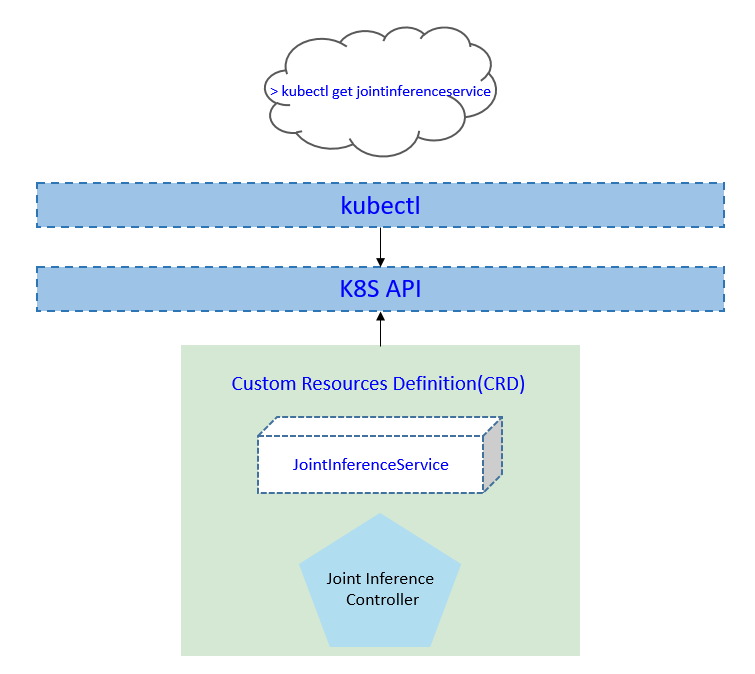
Use Cases¶
User can create a joint inference service with providing a training script, specifying the aggregation algorithm, configuring training hyper parameters, configuring training datasets.
Users can get the joint inference status, including the counts of inference at the edge/cloud.
Design Details¶
CRD API Group and Version¶
The JointInferenceService CRD will be namespace-scoped.
The tables below summarize the group, kind and API version details for the CRD.
JointInferenceService
Field |
Description |
|---|---|
Group |
sedna.io |
APIVersion |
v1alpha1 |
Kind |
JointInferenceService |
Joint inference CRD¶
see crd source
Joint inference type definition¶
see go source
Validation¶
Open API v3 Schema based validation can be used to guard against bad requests. Invalid values for fields ( example string value for a boolean field etc) can be validated using this.
Here is a list of validations we need to support :
The
datasetspecified in the crd should exist in k8s.The
modelspecified in the crd should exist in k8s.The edgenode name specified in the crd should exist in k8s.
joint inference sample¶
see sample source
Controller Design¶
The joint inference controller starts three separate goroutines called upstream, downstream and joint-inferencecontroller. These are not separate controllers as such but named here for clarity.
joint inference: watch the updates of joint-inference-task crds, and create the workers to complete the task.
downstream: synchronize the joint-inference updates from the cloud to the edge node.
upstream: synchronize the joint-inference updates from the edge to the cloud node.
Joint Inference Controller¶
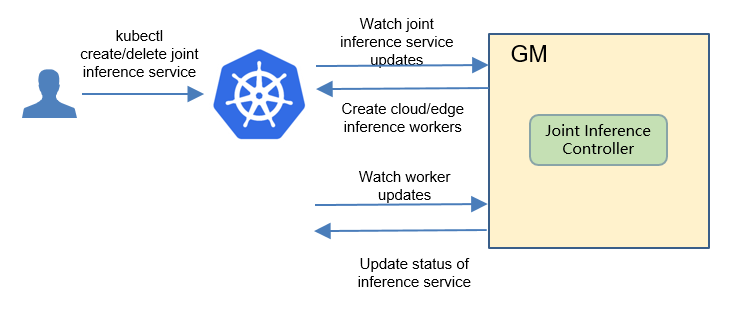
The joint-inference controller watches for the updates of joint-inference tasks and the corresponding pods against the K8S API server. Updates are categorized below along with the possible actions:
Update Type |
Action |
|---|---|
New Joint-inference-service Created |
Create the cloud/edge worker |
Joint-inference-service Deleted |
NA. These workers will be deleted by GM. |
The corresponding pod created/running/completed/failed |
Update the status of joint-inference task. |
Downstream Controller¶
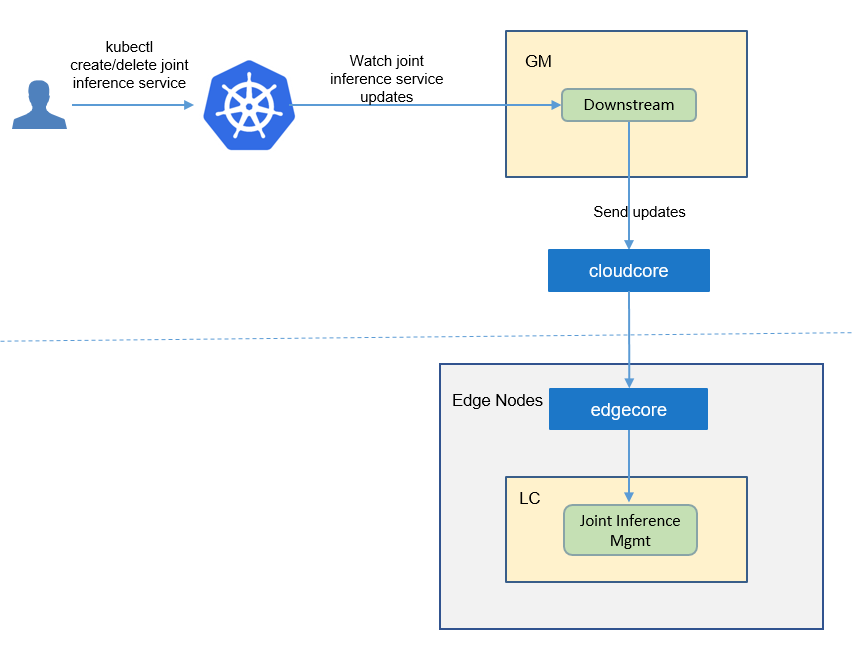
The downstream controller watches for joint-inference updates against the K8S API server. Updates are categorized below along with the possible actions that the downstream controller can take:
Update Type |
Action |
|---|---|
New Joint-inference-service Created |
Sends the task information to LCs. |
Joint-inference-service Deleted |
The controller sends the delete event to LCs. |
Upstream Controller¶
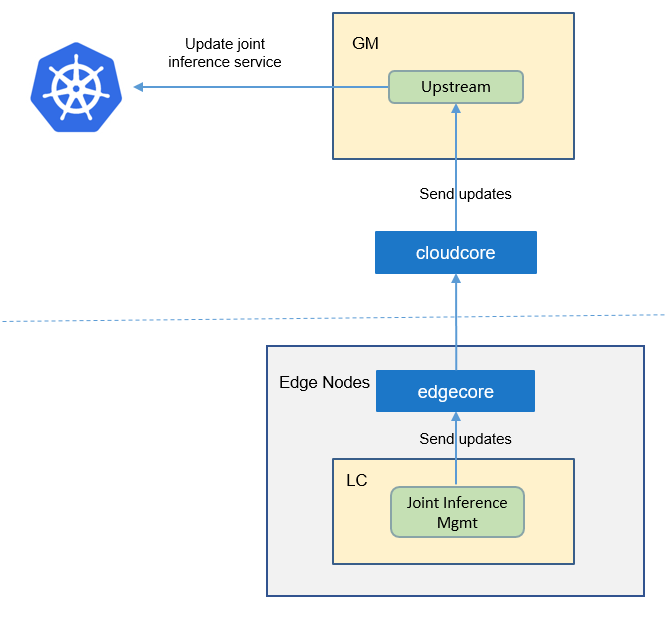
The upstream controller watches for joint-inference-task updates from the edge node and applies these updates against the API server in the cloud. Updates are categorized below along with the possible actions that the upstream controller can take:
Update Type |
Action |
|---|---|
Joint-inference-service Reported State Updated |
The controller appends the reported status of the Joint-inference-service in the cloud. |
Details of api between GM(cloud) and LC(edge)¶
GM(downstream controller) syncs the task info to LC:
// POST <namespace>/sedna/downstream/jointinferenceservices/<name>/insert // body same to the task crd of k8s api, omitted here.
LC uploads the task status which reported by the worker to GM(upstream controller):
// POST <namespace>/sedna/upstream/jointinferenceservices/<name>/status // JoinInferenceServiceStatus defines status that send to GlobalManager type JoinInferenceServiceStatus struct { Phase string `json:"phase"` Status string `json:"status"` Output *Output `json:"output"` } // Output defines task output information type Output struct { Models []Model `json:"models"` TaskInfo *TaskInfo `json:"taskInfo"` } // Model defines the model information type Model struct { Format string `json:"format"` URL string `json:"url"` } // TaskInfo defines the task information type TaskInfo struct { InferenceNumber int `json:"inferenceNumber"` HardExampleNumber int `json:"hardExampleNumber"` UploadCloudRatio float64 `json:"uploadCloudRatio"` StartTime string `json:"startTime"` CurrentTime string `json:"currentTime"` }
Details of api between Worker(edge) and LC(edge)¶
Worker sends inference info to LC in same edge node:
// POST /sedna/workers/<worker-name>/info
{ "name": "worker-name", "namespace": "default", "ownerName": "jointinferenceservice-name", "ownerKind": "jointinferenceservice", "kind": "inference", "status": "completed/failed/running", "taskInfo": { "inferenceNumber": 1000, "hardExampleNumber": 100, "uploadCloudRatio": 0.1, "startTime": "2020-11-03T08:39:22.517Z", "updateTime": "2020-11-03T08:50:22.517Z" } }
Flow of Joint Inference¶
The flow of joint inference service creation:
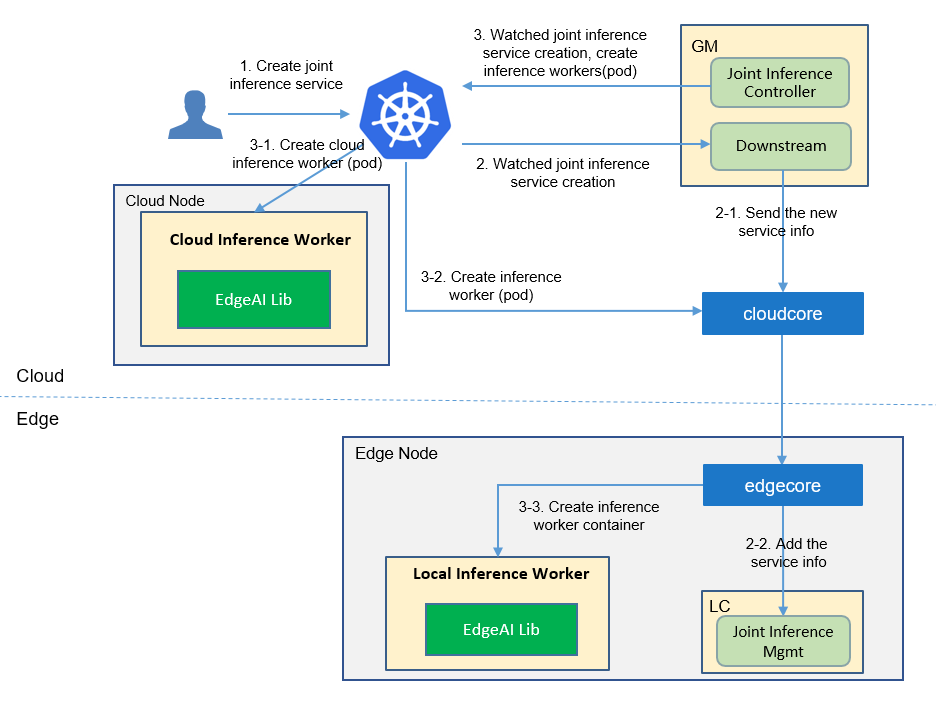
Workers Communication¶
